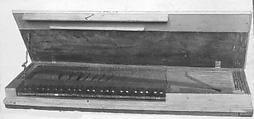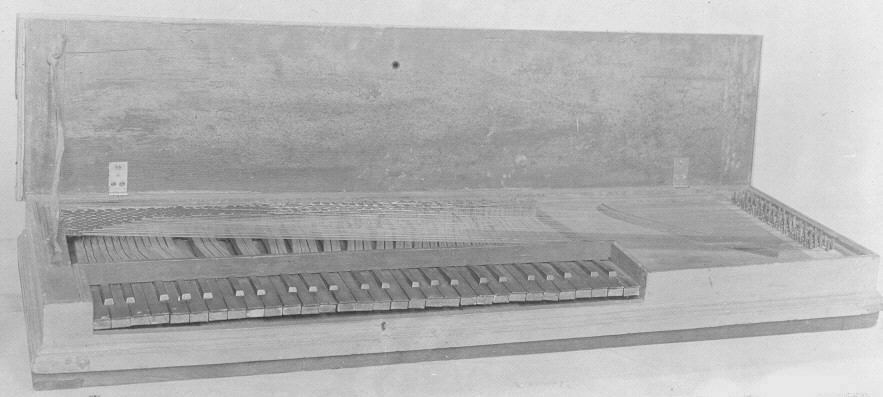Clavichord
Not on view
Clavichords were built as far back as the early fifteenth century, and perhaps earlier. This most personal, simplest, and quietest of European keyboard instruments was the perfect vehicle for music pedagogy, keyboard practice, and composition throughout its 400-year history. The action of the clavichord is relatively simple: the finger depresses a key which, working as a lever, causes its opposite end to rise so that a metal tongue (or tangent) hits a metal string, causing it to resonate. When the key is released, the string is damped. The clavichord is very quiet compared to the harpsichord or piano because of the inefficiency of its sound production, with the tangent hitting the string at the end of its resonating length, rather than in the middle. The tangent mechanism, however, allows a player to achieve a range, albeit narrow, of louder and softer tones as well as special effects like bebung, a form of vibrato, so that the clavichord was and is valued for its intimate expressiveness. Earlier clavichords were fretted, that is, a single string might be used to create several different notes, depending on where a tangent struck it. Unfretted clavichords, with a single note per string, came into use in the late seventeenth century.
Technical description: Fretted clavichord, range C-e3; softwood case with exterior painted grey-green and interior painted red; keycovers: naturals (3.4 cm long) covered with a light yellow-brown hardwood - not boxwood - - with 2 scored lines, decorative paper fronts; accidentals (5.5 cm long) of black-stained hardwood; pivot points of naturals 9.6 cm from front, of accidentals 6.5, the same from bass to treble; soundboard of spruce or similar wood; bridge has molded cross-section, no backpinning; oblong tuning pin heads, mainly unpierced, with note names written on pinblock; double-strung with 35 pairs of strings for 53 keys; tangents of softish white metal, perhaps iron. (Hardy Schlick, 1977)
Due to rights restrictions, this image cannot be enlarged, viewed at full screen, or downloaded.
This artwork is meant to be viewed from right to left. Scroll left to view more.



